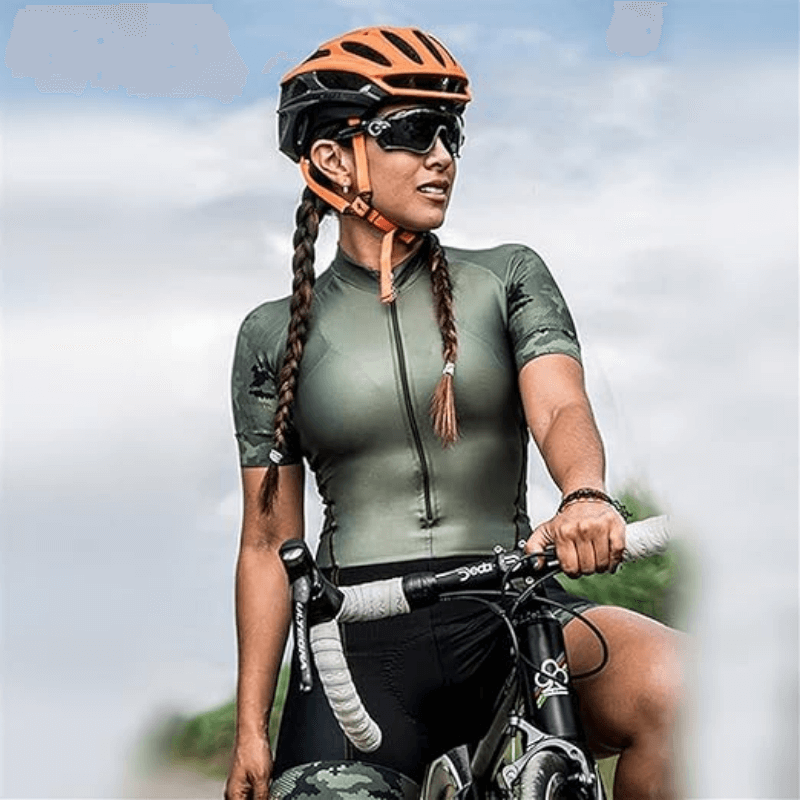When it comes to cycling apparel, men’s and women’s designs are very different from one another. Cycling apparel is rigorously designed to improve performance, comfort, and safety. It is important to note that these variances are not only ornamental; rather, they are anchored in anatomical, physiological, and stylistic variables that have an impact on how the garment fits, acts, and performs. In order for experienced buyers and procurement professionals in the cycling sector to formulate well-informed selections, it is essential for them to have a thorough understanding of these distinctions. In order to provide industry professionals with a comprehensive understanding, this article conducts an in-depth investigation of the myriad of distinctions that exist between cycling apparel for men and women.

Characteristics of the Anatomy
Accuracy and Customisation
When it comes to cycling apparel, the fit is the most noticeable distinction between men’s and women’s options. The usual female body form is reflected in the design of cycling clothes for women, which is fitted to accommodate wider hips, narrower shoulders, and a shorter torso. Men’s clothing, on the other hand, is intended to be worn by individuals who have a flatter, more rectangular body form. By reducing the amount of superfluous fabric and potential chafing places, this tailoring guarantees that the wearing experience is both comfortable and effective.
Chamois Pad Design
The design of the chamois pad, which is an essential component for ensuring comfort during extended rides, varies greatly from one model to the next. It is common for women’s chamois pads to be shorter in order to accommodate a shorter torso due to the fact that they are larger in the back in order to provide greater support for wider pelvic bones. When compared to women’s chamois pads, men’s chamois pads are often longer and thinner. This is because they are designed to better support the anatomy of men and alleviate pressure points.
Modifications to the Functions
Ventilation and Moisture Management
Women typically have a higher body temperature than men do, and they may sweat in a different manner than men do. Ventilation and moisture management are two important aspects to consider. As a consequence of this, cycling apparel for women frequently incorporates improved functionality in terms of ventilation and moisture wicking. Additionally, this may involve the installation of additional mesh panels or vents that are strategically positioned in order to improve airflow and reduce drying periods.
Compression Levels
While cycling apparel is essential for providing support to the muscles and improving blood circulation, compression wear is also essential. There may be differences in compression zones between women’s cycling apparel and men’s cycling wear. These differences are a reflection of differences in the distribution of muscle mass and vascular systems. Because of these changes, the compression garment is able to provide the muscles with effective support without being overly restrictive.

The Differences Between Aesthetics and Stylistics
Colour and Design
Although the utilitarian aspects of cycling apparel are of the utmost importance, the aesthetic design also plays a vital role in the decision-making process. The selection of colours and patterns available in women’s cycling equipment is typically more extensive, making it possible to satisfy a wide range of preferences and likes. On the other hand, men’s cycling apparel typically contains designs and colours that are more modest, however this trend is progressively altering as more businesses provide alternatives that are more bright for men as well.
Customisation and Accessories
Accessories and customisation choices are also available in a variety of forms. Cycling apparel for women typically incorporates features such as adjustable straps, built-in bras, and reflective accents, all of which are designed to improve safety while also catering to the preferences of the wearer’s aesthetic tastes. Men’s cycling apparel may have an emphasis on functionality by including a greater number of pockets and fabrics that are built to withstand rough use.
Considerations Regarding Performance
Aerodynamics
The efficiency of aerodynamics is an essential component in competitive bicycle sports. One of the most important factors in reducing drag is the way in which the clothing fits. differing aerodynamic considerations are taken into account while designing cycling apparel for men and women. This is done to accommodate the differing body shapes and positions that are often chosen by each gender while cycling. Additional tailoring may be added to women’s bib shorts and jerseys around the hips and bust in order to provide a more snug fit, which in turn improves the aerodynamic performance of the garment.
Temperature Regulation
Another important component in performance is the ability to regulate the temperature. As a result of women’s often greater sensitivity to temperature changes, cycling apparel designed specifically for women frequently incorporates more advanced thermal regulation technologies. One example of this is the incorporation of thermal linings into cold-weather gear. Men’s clothing may place a greater emphasis on breathability and moisture management due to the fact that men’s perspiration rates and body heat output are different from those of women.
Material and Fabric Choices
Alternatives for Materials and Fabrics
Weight of the Fabric and Stretchability The weight of the fabric and its stretchability are carefully selected to accommodate the distinct muscle structures and flexibility requirements of men and women during the manufacturing process. Textiles that are lighter and more flexible could be used for women’s cycling apparel. These textiles would allow for a greater range of motion and would better conform to the curves of the body. For the purpose of providing durability and support for greater muscle groups, men’s cycling apparel typically makes use of textiles that are slightly heavier and more robust.
Properties that are Anti-Odor and Anti-Bacterial
Because of the various sweat compositions and skin sensitivities, the anti-odor and anti-bacterial treatments that are applied to fabrics may also vary. The cycling apparel that is designed for women typically combines hypoallergenic and milder treatments that are designed to cater to more sensitive skin, whilst the cycling gear that is designed for males may utilise more powerful anti-bacterial treatments to counteract higher perspiration levels.

Specific Considerations
Sizing Variability
Buyers need to be fully aware of the disparities in sizes, which is the first point to consider. The sizing charts for women’s cycling clothing are typically different from those used for men’s cycling gear, and the sizing standards used by different brands might vary greatly. In order to cater to a wide variety of customers, it is essential to offer a comprehensive size range and to make sure that accurate sizing charts are accessible.
Preferences and industry Trends
It is necessary to have a solid understanding of the current industry trends as well as the preferences of consumers. In the realm of women’s cycling apparel, there is an increasing demand for inclusiveness and representation of a variety of body types. Despite the fact that men’s cycling apparel has traditionally been more standardised, there is a growing trend towards personalisation and variation in this category. By staying current with these trends, one can make more informed decisions regarding inventory management and purchase.
Price Points
The degree to which different consumer categories are sensitive to variations in price varies. It is not uncommon for women’s cycling apparel to be more expensive than men’s owing to the additional tailoring and specialised features that are included. Buyers are responsible for striking a balance between cost and quality, as well as ensuring that the price points are in line with the expectations of their target market.
Brand Reputation and Quality Assurance
The reputation of a brand is a crucial factor in the decisions that consumers make regarding their purchases. Consumers should give serious consideration to brands that are well-known for their quality, durability, and innovative designs in cycling apparel for both men and women. It is possible to increase consumer happiness and loyalty by making certain that the selected brands provide quality that is consistent and provide excellent customer service.
When it comes to cycling apparel, the primary distinctions between men’s and women’s clothing go much beyond merely appearances. They include anatomical tailoring, functional features, performance concerns, and material choices, all of which are meant to fit the specific requirements of each gender. It is crucial for experienced buyers and procurement specialists to have a thorough awareness of these intricacies in order to make well-informed judgements that efficiently cater to their customer base. It is possible for purchasers to ensure that they provide cycling apparel that is of excellent quality, comfortable, and enhances performance by recognising and resolving these distinctions. This will allow them to satisfy the varied requirements of cyclists.











